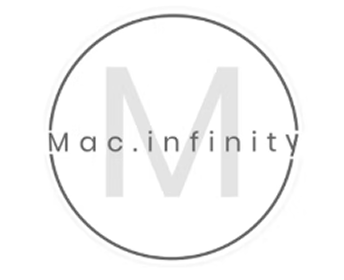How to Backup Your Mac
- Mac Infinity
- Oct 2, 2023
- 4 min read
Updated: 4 days ago

In the digital age, where our lives are increasingly intertwined with technology, the importance of safeguarding your Mac's data cannot be overstated. Whether you're a creative professional, a business owner, or just a casual user, the prospect of losing your precious files, cherished memories, and essential documents is a nightmare scenario you want to avoid at all costs.
Why Must Back Up Your Mac
1. Hardware Failures
Your Mac's hard drive, whether it's a traditional HDD or a modern SSD, is not infallible. Hardware failures can occur unexpectedly, rendering your data inaccessible. Without a backup, recovering your files from a failed drive can be an arduous and costly process.
2. Accidental Data Loss
Mistakes happen. You might accidentally delete a crucial file, overwrite a document, or spill a drink on your Mac. In such cases, having a backup means you can effortlessly restore your files to their previous state, minimizing the damage caused by these mishaps.
3. Theft or Loss
MacBooks are sleek, portable, and desirable targets for thieves. If your Mac is stolen or lost, having a backup ensures that your data remains secure and accessible, even if the physical device is gone forever.
4. Malware and Data Security
While Mac malware is less common than on other platforms, it's not impossible to encounter. A backup provides a lifeline in case your Mac falls victim to malware, allowing you to restore your data to a clean state before the infection occurred.
5. System Updates
Major macOS updates can sometimes lead to compatibility issues or unforeseen problems. Having a backup before updating allows you to revert to the previous OS version if something goes awry during the upgrade process.
Mac Backup Options
Option 1: Time Machine
Time Machine, Apple's built-in backup software, is an excellent starting point for Mac users. It offers a simple, automated solution for backing up your entire system and creating versioned backups. Time Machine keeps hourly backups for the past 24 hours, daily backups for a month, and weekly backups for each month, ensuring you can retrieve older versions of documents or recover from various scenarios.
How to Use Time Machine
Plug in an external storage device (hard drive or SSD).
When prompted, select the external drive as your Time Machine backup destination.
Let Time Machine work its magic, creating automatic backups in the background.
While Time Machine is user-friendly and effective, remember that your backup drive should have ample storage, ideally four times the size of your Mac's data.
Option 2: iCloud
iCloud offers seamless integration with your Mac and other Apple devices, making it a convenient choice for syncing specific data types across your ecosystem. While it's not a complete system backup solution, iCloud can safeguard your essential documents, photos, and more.
How to Use iCloud for Mac Backup
Sign in to iCloud in your Mac's System Preferences.
Select the data types you want to sync to iCloud, such as Desktop and Documents.
Your selected data will be available across all your Apple devices, and you can recover it if needed.
Remember that iCloud storage plans are available at different price points, so choose a plan that suits your needs.
Option 3: Cloud Storage Services
If you prefer flexibility in your cloud backup strategy, consider services like Dropbox, Google Drive, or Microsoft OneDrive. These services allow you to sync and share files effortlessly and can serve as a partial backup solution for important data.
How to Use Cloud Storage for Mac Backup
Sign up for a cloud storage service of your choice.
Install the desktop app and sync your desired files or folders.
Your data will be accessible from any device with the same cloud service installed.
While these services excel at file synchronization and sharing, they are not comprehensive backup solutions for your entire Mac.
Option 4: Dedicated Online Backup
For a robust and secure backup strategy, dedicated online backup solutions like DropBox or Google Drive provide remote, off-site storage for your data. In the event of hardware failure, theft, or catastrophic events like fires or floods, your data remains safe and accessible.
How to Use Dedicated Online Backup
Sign up for an online backup service.
Install the provided software and configure your backup preferences.
Your Mac's data will be securely backed up to remote servers, ensuring redundancy.
Dedicated online backup services offer peace of mind and comprehensive protection for your data, but they may incur subscription costs.
Option 5: Cloning Your Hard Drive
Cloning your Mac's hard drive creates an exact duplicate, which can be useful for rapid system recovery. However, recent macOS updates have introduced complexities in the cloning process, limiting its reliability as a primary backup solution.
How to Clone Your Mac
Connect an external storage device.
Use specialized software to create a clone of your Mac's storage.
Ensure that you maintain the cloned copy regularly to keep it up to date.
While cloning can be valuable for specific use cases, such as temporarily booting from an external drive, it should not be relied upon as your sole backup method.
Conclusion
Protecting your Mac's data is not a matter of if, but when. Hardware failures, accidents, and unforeseen events can strike at any moment. Choosing the right backup strategy for your needs is crucial to ensure the safety and accessibility of your valuable files and memories. Consider a multi-faceted approach to Mac backup, combining Time Machine for system-wide protection, iCloud for seamless data synchronization, and dedicated online backup for comprehensive, off-site security. With the right strategy in place, you can rest assured that your Mac's data is safeguarded against the unpredictable challenges of the digital age.
Visit us Mac Infinity at :
Millenia Walk (Main)
9 Raffles Boulevard ,Millenia Walk #01-81 ,
Singapore 039596
Phone: 9169 1257 Tel:6333 9721
Opening Hour
Monday - Sunday
11:00-20:00
mac solution lifestyle





Comments